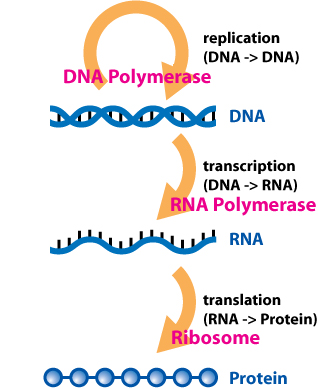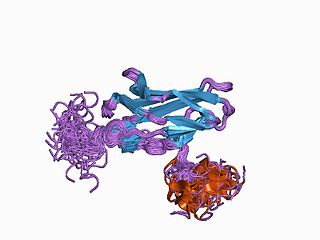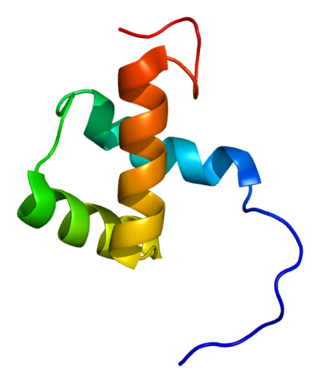
In molecular biology, a transcription factor (TF) is a protein that controls the rate of transcription of genetic information from DNA to messenger RNA, by binding to a specific DNA sequence. The function of TFs is to regulate—turn on and off—genes in order to make sure that they are expressed in the desired cells at the right time and in the right amount throughout the life of the cell and the organism. Groups of TFs function in a coordinated fashion to direct cell division, cell growth, and cell death throughout life; cell migration and organization during embryonic development; and intermittently in response to signals from outside the cell, such as a hormone. There are approximately 1600 TFs in the human genome. Transcription factors are members of the proteome as well as regulome.

Haemophilia B, also spelled hemophilia B, is a blood clotting disorder causing easy bruising and bleeding due to an inherited mutation of the gene for factor IX, and resulting in a deficiency of factor IX. It is less common than factor VIII deficiency.

In molecular genetics, the three prime untranslated region (3′-UTR) is the section of messenger RNA (mRNA) that immediately follows the translation termination codon. The 3′-UTR often contains regulatory regions that post-transcriptionally influence gene expression.

Coagulation factor VIII is an essential blood clotting protein. In humans, it is encoded by F8 gene. Defects in this gene result in hemophilia A, an X-linked bleeding disorder.
In molecular biology, the TATA box is a sequence of DNA found in the core promoter region of genes in archaea and eukaryotes. The bacterial homolog of the TATA box is called the Pribnow box which has a shorter consensus sequence.

Factor IX, also known as Christmas factor, is one of the serine proteases involved in coagulation; it belongs to peptidase family S1. Deficiency of this protein causes haemophilia B.

GATA-binding factor 1 or GATA-1 is the founding member of the GATA family of transcription factors. This protein is widely expressed throughout vertebrate species. In humans and mice, it is encoded by the GATA1 and Gata1 genes, respectively. These genes are located on the X chromosome in both species.
In molecular genetics, the Krüppel-like family of transcription factors (KLFs) are a set of eukaryotic C2H2 zinc finger DNA-binding proteins that regulate gene expression. This family has been expanded to also include the Sp transcription factor and related proteins, forming the Sp/KLF family.

Runt-related transcription factor 1 (RUNX1) also known as acute myeloid leukemia 1 protein (AML1) or core-binding factor subunit alpha-2 (CBFA2) and it is a protein that is encoded by the RUNX1 gene, in humans.

CCAAT/enhancer-binding protein alpha is a protein encoded by the CEBPA gene in humans. CCAAT/enhancer-binding protein alpha is a transcription factor involved in the differentiation of certain blood cells. For details on the CCAAT structural motif in gene enhancers and on CCAAT/Enhancer Binding Proteins see the specific page.

C-terminal-binding protein 1 also known as CtBP1 is a protein that in humans is encoded by the CTBP1 gene. CtBP1 is one of two CtBP proteins, the other protein being CtBP2.

DNA damage-binding protein 1 is a protein that in humans is encoded by the DDB1 gene.

DNA-binding protein Ikaros also known as Ikaros family zinc finger protein 1 is a protein that in humans is encoded by the IKZF1 gene.

Forkhead box protein O4 is a protein that in humans is encoded by the FOXO4 gene.

Zinc finger E-box-binding homeobox 1 is a protein that in humans is encoded by the ZEB1 gene.

D site of albumin promoter binding protein, also known as DBP, is a protein which in humans is encoded by the DBP gene.

Krueppel-like factor 8 is a protein that in humans is encoded by the KLF8 gene. KLF8 belongs to the family of KLF protein. KLF8 is activated by KLF1 along with KLF3 while KLF3 represses KLF8.

GTP-binding protein Rit1 is a protein that in humans is encoded by the RIT1 gene.

Krüppel-like factor 3 is a protein that in humans is encoded by the KLF3 gene.
George Gow Brownlee is a British pathologist and Fellow of Lincoln College, Oxford.
















